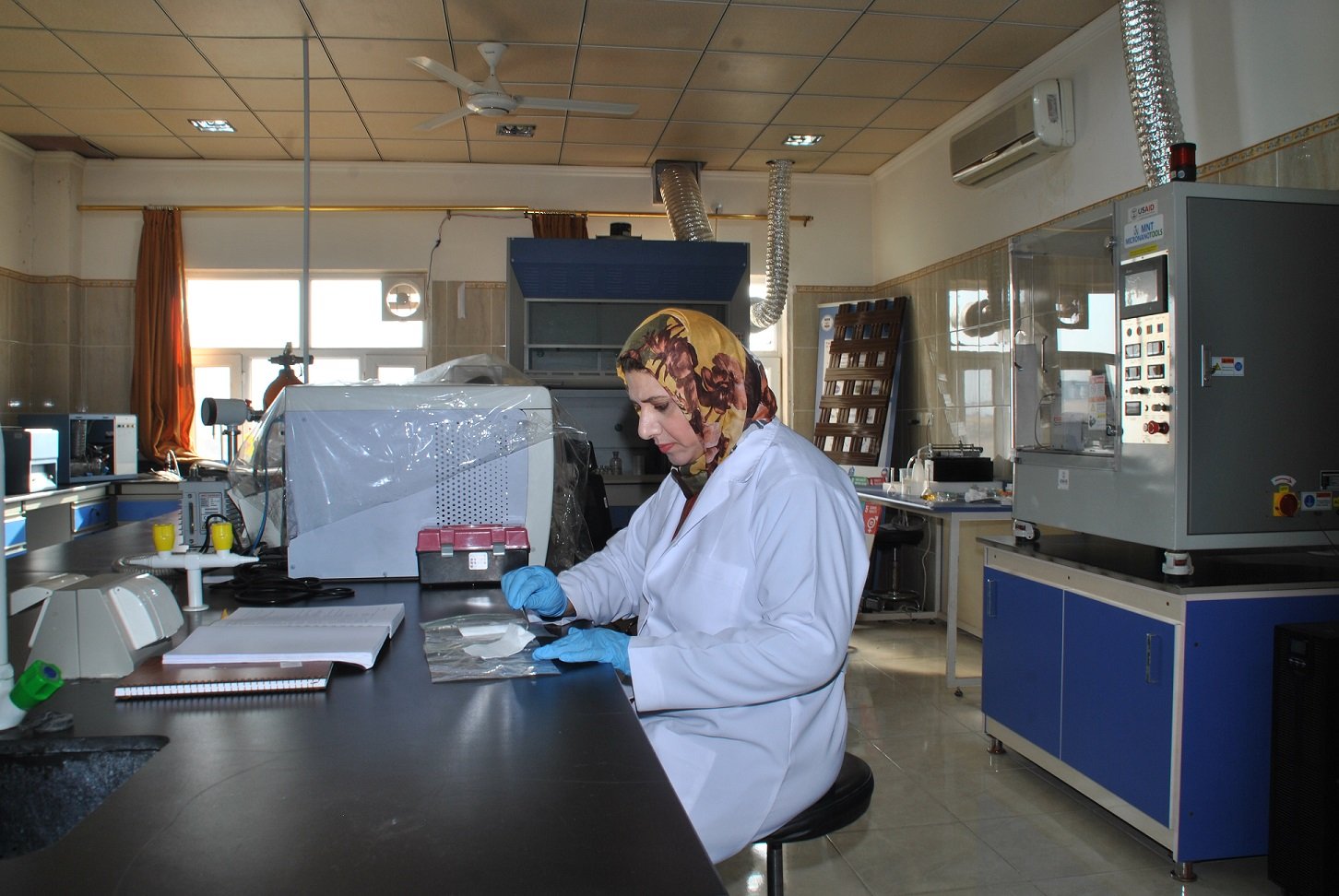|
Cycle 6 (2017 Deadline)
Removal of hazardous materials from aqueous solution using nanofiber membranes
PI: Suhad Yasin, suhadabd735@yahoo.com, University of Duhok
U.S. Partner: Vince Beachley, Rowan University
Dates: March 2018 - December 2021
Project Overview
 | Team member conducts experiments inside the PEER Lab (Photo courtesy of Dr. Yasin).
|
This project focused on the study of the functions of nanofiber membranes and their use to remove heavy metals from aqueous solutions. In the short term, the researchers studied electrospinning parameters in order to design nanofibers from available waste materials in Kurdistan Region. Long-term goals included broadening the technology of electrospinning nanofiber membranes as an option to conventional membranes and polymer beads. The electrospun membrane, in particular, may be successfully applied in water treatment and biotechnology, where the removal of toxic materials requires materials with a high surface area. In addition to the high surface area, changes in the surface chemistry of the nanofibers may also do wonders for their performance.
Nanofiber technology has hugely impacted both science and engineering disciplines. The motivations for the miniaturization process of polymers are based on producing nano-sized fibers with superior properties (for example, excellent mechanical properties and a large surface area per unit mass) compared to microfiber and film. The functionalities of the polymers plus the unique characteristics of nanofibers originated from them and being engineered in various forms have allowed nanofibers to be used in advanced applications such as filtration, multifunctional membranes, composite reinforcement, tissue engineering scaffolds, drug delivery, and wound dressings. As for water purification, a very important application in water-scare areas such a Iraq, adsorption is a technique that can potentially achieve high yields of heavy metal removal even for low concentration effluents. It can be a more cost-effective process to remove and recover heavy metals, based on the choice of adsorbent material. This PEER award supported fundamental research into a new adsorbent prepared from waste polymers. It was the first research project in nanotechnology carried out at the University of Duhok. By providing opportunities for several researchers to gain firsthand experience in nanotechnology research, the program also helped to improve the research infrastructure and enhance research collaboration both within the department and with the U.S. partner.
.
Final Summary of Project Activities
This project focused very heavily on enabling and building a research community in Kurdistan. The first year of the project focused on establishing an electrospinning laboratory, which is the first lab in the Kurdistan region for producing nanofibers. This involved building a network internationally as the equipment and expertise needed was only available in the international research community. The second year saw the introduction and complications of COVID-19, but the team was still able to conduct their work with appropriate precautions, and continued their collaborations virtually. In the third year of the project, the team established the Electron Microscope Laboratory, which is the in Iraq. The two laboratories that have been established by PEER are considered the most important laboratories in the College of Science, which is busy with researchers and graduate students.
The team established a number of international partnerships, including with Al-Azhar University in Egypt with whom the team collaborated on a number of endeavors and jointly published research papers. The team visited many advanced research centers in multiple countries, which had a great positive impact on their scientific knowledge. From starting with research in nanofibers, the project team published ten research papers in high-impact factor journals related to water treatment from pharmaceuticals, heavy metals, and dyes, as well as one book chapter. The team was also invited to, and participated in, international organizations such as AGYA, DAAD, and the International Women in Science Conference.
Back to PEER Cycle 6 Grant Recipients
|
|
|
|




